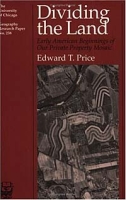| Dividing the Land: Early American Beginnings of Our Private Property Mosaic (University of Chicago Geography Research Paper, No 238) артикул 2101d. |
 |
Many property lines drawn in early America still survive today and continue to shape the landscape and character of the United States Surprisingly, though, no one until now has thoroughly examined the process by which land was divided into private property and distributed to settlers from the beginning of colonization to early nationhood In this ожйщг unprecedented study, Edward T Price covers most areas of the United States in which the initial division of land was controlled by colonial governments--the original thirteen colonies, and Maine, Vermont, Kentucky, West Virginia, Tennessee, Louisiana, and Texas By examining different land policies and the irregular pattern of property that resulted from them, Price chronicles the many ways colonies managed land to promote settlement, develop agriculture, defend frontiers, and attract investment His analysis reveals as much about land planning techiniques carried to America from Europe as innovations spurred by the unique circumstances of the new world Price’s analysis draws on his thorough survey of property records from the first land plans in Virginia in 1607 to empresario grants in Texas in the 1820s This breadth of data allows him to identify regional differences in allocating land, assess the impact of land planning by historical figures like William Penn of Pennsylvania and Lord Baltimore of Maryland, and trace changes in patterns of land division and ownership through transfers of power among Britain, the Netherlands,France, Spain, Mexico, and the Republic of Texas. Серьги выполненыISBN 0226680657. |